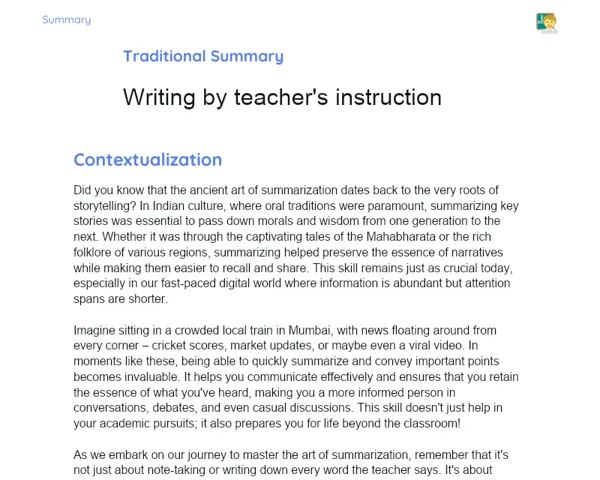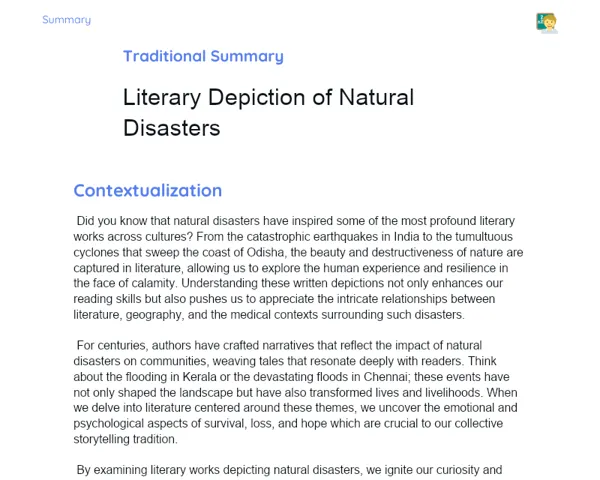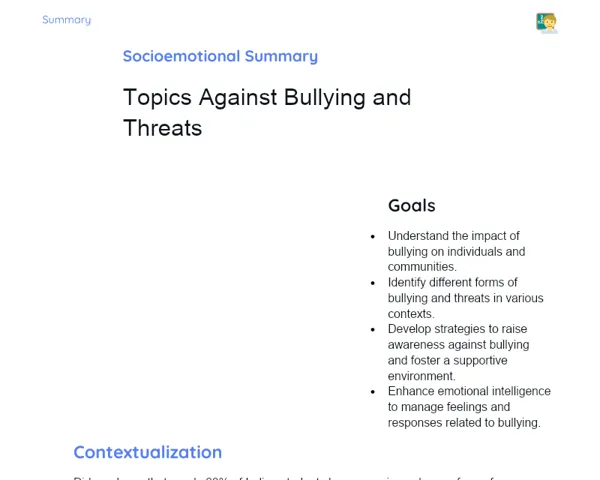Summary Tradisional | Verbs: Simple Present
Contextualization
The Simple Present is one of the foundational verb forms in learning English. It describes habitual actions, daily routines, and universal truths. For instance, when we say 'I brush my teeth every day', we indicate an action that occurs regularly. This tense is also used in news headlines for clear and concise communication, like in 'President inaugurates new school'.
For students learning English, getting a grip on the Simple Present is essential. It empowers them to describe their own routines and habits while also helping them to understand and communicate about the daily activities of others. Mastering this verb tense lays a solid groundwork for building communicative skills that facilitate interaction in various everyday situations. Throughout our lessons, we will explore how to create affirmative and negative sentences and questions using the Simple Present, as well as identify commonly used time-related words and phrases.
To Remember!
Formation of the Simple Present
The Simple Present is formed using the base form of the verb for most subjects, adding –s or –es in the third person singular (he, she, it). For example, 'I play' changes to 'He plays' when the subject is 'he'. The –es ending is added to verbs that end in –s, -sh, -ch, -x, or -z, like 'watches' and 'fixes'. This formation is straightforward yet crucial for the proper use of the Simple Present.
Grasping how to form the Simple Present is vital for constructing accurate sentences in English, as the third person singular inflection is one of its key features. This rule applies to all regular verbs making it easier for students to remember and practically apply.
It's also important to note that the formation does not change for irregular verbs, except for 'to be'. So, we have 'I am', 'you are', 'he/she/it is', 'we are', 'you are', 'they are'. Therefore, students must pay attention to these exceptions to avoid making frequent mistakes.
-
Base form of the verb for most subjects.
-
Addition of –s or –es in the third person singular.
-
Exceptions for irregular verbs, particularly 'to be'.
Use of the Simple Present
The Simple Present is mainly used to describe habits, daily routines, and universal facts. For instance, 'She goes to school every day' denotes a habitual action, while 'The sun rises in the east' is a universal truth. This application makes the Simple Present indispensable for everyday communication, allowing speakers to effectively describe their activities and comprehend those of others.
It also describes frequent or repeated actions. Words like 'always', 'usually', 'often', 'sometimes', 'never' frequently accompany this tense to indicate how often something occurs. For example, 'I always eat breakfast at 7 AM'. Such words enhance the context and clarity of sentences, aiding in communication.
Moreover, the Simple Present describes scheduled events or fixed times, such as 'The train leaves at 6 PM'. This is especially useful in contexts like transport schedules, events, and programs, where accurate timing is necessary. Recognising this aspect of the Simple Present helps students plan and articulate future events clearly and accurately.
-
Describes habits, routines, and universal truths.
-
Used with frequency words like 'always', 'usually', 'often'.
-
Describes scheduled events or fixed times.
Building Negative Sentences
To form negative sentences in the Simple Present, we use 'do not' (don't) for most subjects and 'does not' (doesn't) for the third person singular. For example, 'I do not (don't) like spinach' and 'He does not (doesn't) play football'. This structure is fundamental for effectively and clearly negating actions.
Creating negative sentences is key for communication, as it enables students to convey what they don't do or dislike. This is important for daily interactions, where expressing preferences, habits, and activities is essential.
Another key aspect is keeping the base form of the verb after 'do not' or 'does not', without adding –s or –es. For example, 'She doesn't go to school' is correct, not 'She doesn't goes to school'. Understanding this helps students avoid common pitfalls and accurately form negative sentences.
-
Use of 'do not' (don't) for most subjects.
-
Use of 'does not' (doesn't) for the third person singular.
-
Base form of the verb after 'do not' or 'does not'.
Forming Questions
To form questions in the Simple Present, we use 'do' or 'does' at the beginning of the sentence, followed by the subject and the base form of the verb. For instance, 'Do you like pizza?' and 'Does she play the piano?'. This structure is vital for asking questions clearly and efficiently.
The ability to formulate questions is an essential skill in everyday communication, as it allows students to gather information and engage effectively with others. Knowing how to ask questions correctly is crucial for interaction in classrooms, social situations, and professional settings.
It’s important to note the inversion of 'do' or 'does' with the subject, unlike in affirmative statements. For example, the affirmative 'You like pizza' becomes 'Do you like pizza?' in question format. Mastering this inversion is an important aspect of the Simple Present that students need to practice.
-
Use of 'do' or 'does' at the beginning of the question.
-
Base form of the verb after the subject.
-
Inversion of 'do' or 'does' with the subject.
Key Terms
-
Simple Present
-
Habits
-
Routines
-
Universal Facts
-
Verbal Formation
-
Affirmative Sentences
-
Negative Sentences
-
Questions
-
Time Expressions
Important Conclusions
In this lesson, we examined the use of the Simple Present, a core verb form in English. We learned to correctly construct affirmative, negative, and interrogative sentences, stressing the significance of adding –s or –es in the third person singular and using 'do' or 'does' to frame questions and negatives. This knowledge is key to accurately describing habits, routines, and universal truths.
Mastering the Simple Present allows students to detail their daily lives and comprehend those of others, which is crucial for effective communication in various settings. Additionally, an understanding of key words and time expressions provides context and clarity, further facilitating English interactions.
We underscore the importance of what we’ve learned, as the Simple Present forms a solid foundation for developing communication skills. We encourage students to keep practicing and exploring this verb tense in different contexts to enhance their fluency and accuracy in the English language.
Study Tips
-
Practice forming affirmative, negative sentences and questions in the Simple Present with various subjects and verbs to reinforce learning.
-
Incorporate time expressions like 'always', 'usually', 'often' in your sentences to describe habits and routines in greater detail.
-
Read simple English texts, such as news articles and descriptions of daily routines, identifying the Simple Present and attempting to create your own sentences about your daily activities.



